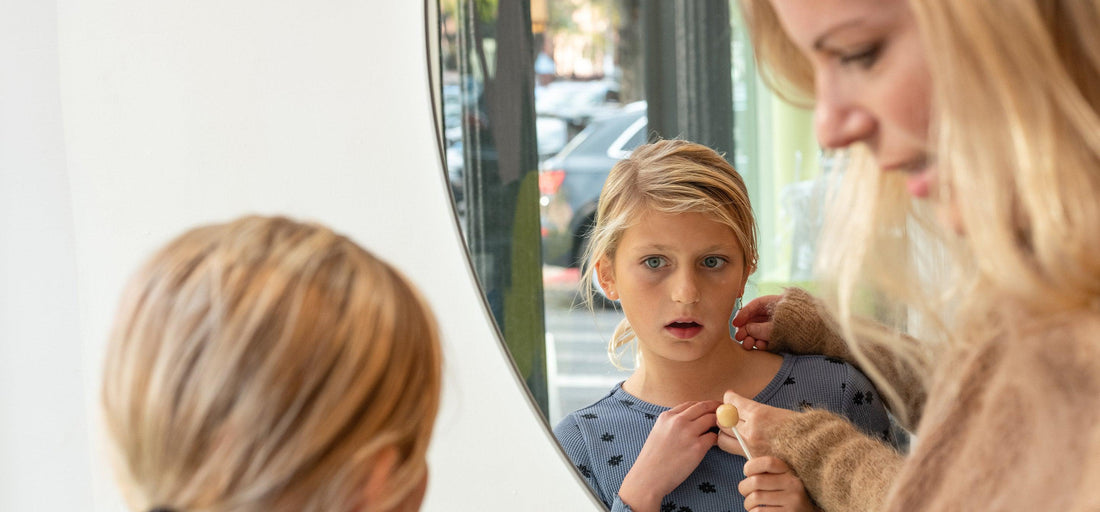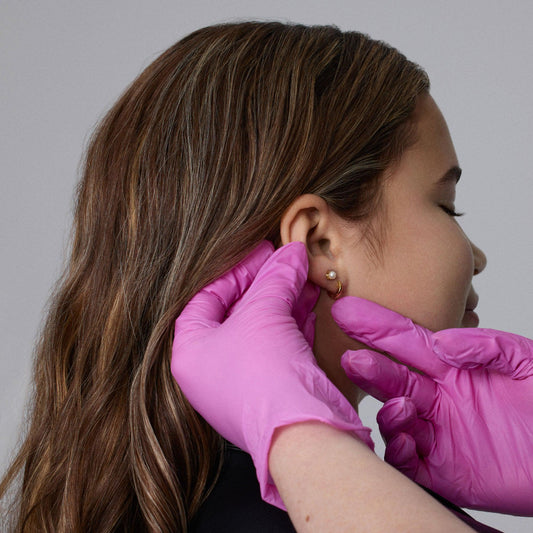Irritated vs Infected Ear Piercing: What to Know
How to Tell the Difference

New piercings commonly experience redness, swelling, and drainage, but it can be hard to tell what’s normal and what’s a potential infection.
Ear piercing is a fun way to channel self-expression! While getting a new piercing is fun and exciting, it is a wound that requires proper care to avoid complications.
New piercings commonly experience redness, swelling, and drainage, but it can be hard to tell what’s normal and what’s a potential infection. But don’t worry, we’re here to help! Here’s how you can differentiate between irritated and infected ears.
This is not intended to provide or replace medical advice. If you are concerned that your piercing may be infected, please seek medical care.
What is an Irritated Ear Piercing?
Irritation of a new piercing is common, as the body goes through an inflammatory phase in an effort to heal the new wound. Some common symptoms of an irritated ear piercing include:
- Redness and swelling around the piercing site
- Pain or tenderness when touching the ear
- Itching or burning sensation
- A clear-yellowish discharge that forms a crust around the piercing
In some cases, irritation can be caused by the body's reaction to the jewelry or the aftercare products used, which is why using only hypoallergenic and nickel-free jewelry is key.
It is important to note that these symptoms can also be caused by an infection, so it is important to monitor the piercing carefully and seek medical attention if the symptoms persist or worsen.
Please note that piercings take a full year to heal. It’s normal to see some irritation within that first year. Whenever your piercing becomes irritated, follow the treatment outlined below.
Treatment for an Irritated Ear Piercing
The first step in treating an irritated ear piercing is to keep the area clean. The best product is a hypochlorous acid spray, such as our Advanced Aftercare; it is antibacterial and will bring healthy white blood cells to the piercing, expediting the healing process.
Avoid touching your piercing, and wash your hands with antibacterial soap before you clean your piercing. If you're a side sleeper, consider purchasing a piercing pillow, as this will help to reduce the pressure on the piercing and allow it to heal. It is also important to avoid touching the area with dirty clothing or pillowcases, as this can introduce bacteria and cause infection. Pillowcase should be changed more frequently - every two days, sleeping on each side just once, works best. Regularly cleaning cell phones, earbuds and glasses will also help keep bacteria at bay.
To relieve the symptoms of an irritated ear piercing, you can apply a warm compress to the area for 5-10 minutes several times a day. To do this, saturate a durable single-use paper towel (like Bounty) with water as warm as you can tolerate without causing discomfort or burning yourself. Squeeze out the excess water and hold over the front and back of the piercing. Then, spray with Rowan’s Advanced Aftercare Spray after using the warm compress. If the symptoms do not improve within a few days, it is important to seek medical attention to rule out an infection.
What is an Infected Ear Piercing?
An infected ear piercing is a more serious condition that can occur when bacteria enter the piercing site. Some common symptoms of an infected ear piercing include:
- Redness and swelling that spreads beyond the piercing site
- Increased pain or tenderness, especially when touching the area
- The area feels warm to the touch
- Yellow or green pus that oozes from the piercing
- Earring starts to become embedded or “sink” into the ear
It is important to seek medical attention if you suspect that you have an infected ear piercing. In severe cases, an untreated infection can lead to complications such as abscesses, scarring, or even permanent damage to the ear.
Treatment for an Infected Ear Piercing
In some cases, your doctor may prescribe antibiotics to help fight the infection. It is important to take the full course of antibiotics as prescribed, even if the symptoms improve. This will help to prevent the infection from returning or becoming resistant to treatment.
Although it may seem counterintuitive, it may be best to leave an earring in place while an infection is healing. By leaving the jewelry in, the piercing acts as an open channel to allow discharge to exit the area. However, listen to what your primary care provider thinks is best for you because every case is different.
What if I Can’t Tell the Difference?
Sometimes the line between irritation and infection can be blurred, making it difficult to distinguish one from the other. You can always reach out to our nurse helpline - nursehelpline@heyrowan.com - to address your concerns, and our nurses can offer advice which may include consulting with your doctor.



